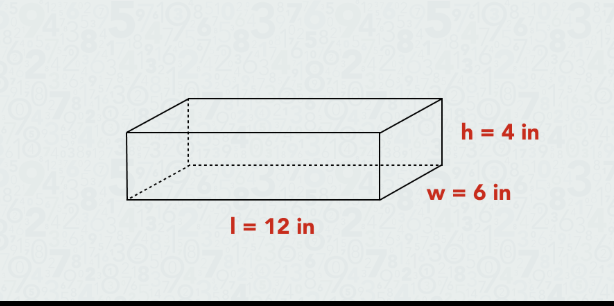What Is Volume? Easy Ways to Understand It in Real Life

Volume is something we use every day, even if we don’t think about it. Volume tells us how much space something takes up. When you fill a glass with water or put your toys in a box, you are using volume. You may also hear volume when talking about sound, like turning up the volume on your TV. So, volume can be about how big something is or how loud a sound is. It is a word that helps us understand the size or space of things around us. This blog will talk about volume in simple ways that anyone can understand, especially kids. Let’s explore how volume works in everyday life and why it matters in school, at home, and even when playing games.
Volume is not just about math or science class—it is something that helps us every day. If you are pouring milk into a cup, you want to know if the cup has enough volume to hold it. Or when you pack your lunch box, you use volume to see how much food it can carry. Even when you hear music, the volume setting tells you how loud or soft the sound is. Volume also helps builders and cooks. Builders use volume to know how much cement or paint to use. Cooks use volume to measure ingredients like water, oil, or flour. Volume is helpful in school, at home, and everywhere else. We will also talk about different ways to measure volume, like using cups, liters, or milliliters. Keep reading to learn more fun things about volume and how it helps you every day!
What Is Volume and Why Do We Use It Every Day
Volume means how much space something takes up. We use volume when we fill a glass with juice, pour water in a bottle, or pack a lunchbox. Volume also tells us how loud music or sounds are. If something is big, it has more volume. If it is small, it has less volume. We also talk about volume in school when learning about math or science. Volume helps us understand how much space is inside things. So, it is useful at home, at school, and even while playing. You use volume without even thinking—when you fill your backpack, mix a drink, or turn up the sound on your TV. Volume is everywhere!
Volume in the Kitchen: Measuring Food and Drinks
When cooking or baking, we use volume to measure things like milk, oil, or flour. If a recipe says “1 cup of water,” that means the volume of water should fit in one cup. We also use spoons or measuring jugs to help with volume in the kitchen. If you want to pour juice into a bottle, you must check if the bottle has enough volume to hold it all. Parents use volume when packing food in boxes for lunch. Even pouring soup into a bowl needs volume thinking! Learning about volume in the kitchen is a fun and tasty way to understand how space and amounts work.
Easy Ways to Understand Volume with Water and Boxes
One easy way to learn about volume is by using water and containers. Take two different cups and fill them with water. Even if they look different, the one with more water has more volume. You can also use toy boxes or lunch boxes to see which holds more. If a box is bigger, it has more volume. You can try putting blocks inside to see how many fit. This is a fun way to play and learn at the same time. Volume is not hard—it just means “how much space is inside something.” Try it at home with water, cups, and toys!
Volume in School: Fun Learning with Shapes and Math
At school, we learn volume by using shapes like cubes or boxes. Teachers use blocks and water to help show what volume means. You might see math problems that ask how much space is inside a box. You can count small cubes that fit inside to find the answer. This helps you see and feel what volume really is. Sometimes, we even do fun projects or games using water or sand. Volume learning can be playful and cool. Understanding volume makes it easier to learn math and helps in science too. It’s all about space and how to measure it!
How Volume Helps in Building and Making Things
Builders and workers use volume all the time. They need to know how much cement, paint, or bricks to use. If they use too much or too little, the building will not be right. Volume helps them measure just the right amount. When making things like bottles, boxes, or tanks, volume tells us how much they can hold. Even cars and machines are made using volume. People who build houses or playgrounds also use volume. They measure space before they make something. So, volume is super helpful for people who build, make, and fix things.
Volume in Music: What Loud and Soft Sounds Mean
Volume is not just about space—it can also be about sound! When you watch TV or listen to music, you can turn the volume up or down. If it is too loud, the volume is high. If it is soft and quiet, the volume is low. Musicians use volume to make songs sound nice. Loud music makes us dance, and soft music helps us rest. Even in school, teachers use volume when speaking—sometimes loud for attention, sometimes soft for calm. Learning sound volume helps us know how to listen and talk better. It’s a fun way to learn what volume can mean!
Conclusion
Volume is a big help in our everyday life. It shows us how much space something uses or how loud a sound is. We use volume when filling bottles, playing with toys, or measuring things at home. Even when we turn on the TV or listen to a song, we are using volume. It helps us understand space, size, and sound in an easy way.
Kids can learn volume through games, water play, and classroom fun. Builders, cooks, and teachers also use volume all the time. So, volume is not just a school thing—it’s a life thing! Learning about volume makes life more fun and smart.
FAQs
Q: What does volume mean in easy words?
A: Volume means how much space something takes or how loud a sound is.
Q: How do I measure volume at home?
A: You can use a cup, spoon, or bottle to see how much water or juice fits inside.
Q: Can volume mean sound too?
A: Yes! Volume can also tell how loud or soft a sound is, like music or talking.



